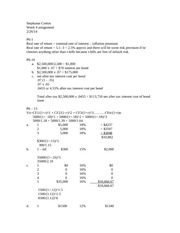
Closing the books is an accounting term used at the end of a month, quarter, or year. It’s sometimes called month-end close or monthly close, and it’s when accountants verify that the numbers on the financial statements are correct. Now that you know how a balance sheet reconciliation is performed, here are some ways you can ensure this crucial process is performed with as little manual work as possible—and no risk of costly errors. With real-time reconciliation capabilities, HighRadius ensures that your financial records are updated daily.
Understanding account reconciliation in financial management
The analyst highlights reconciliations and manual tasks as offering ample room for improvement. Properly reconciling a balance sheet account involves making sure you have recorded and accounted for every transaction in your business and applied the proper classification in the process. Liabilities include amounts owed to vendors, customers, employees, debtors and others.
Identify which accounts need to be reconciled Depending on your industry and the way your organization operates, you may only need to reconcile some accounts as part of this process. For instance, another department may already be responsible for bank reconciliation, meaning including these accounts in your reconciliation would be doubling up on work. After you make adjustments, consider comparing your records to your balance sheet a second (or even a third) time to ensure the mistakes were fixed and that your balance sheet is accurate.
Reconciling Cash Accounts
There’s no need to reinvent the wheel – before you try to build a new workpaper from scratch, see what reconciliation templates already exist. Pre-built templates provide a step-by-step guide for reconciling an account, which helps to ensure that reconciliations are conducted uniformly. For teams discontinued operations definition on Numeric, the trial balance and supporting document total will auto-populate each month, no need to download.
We focus on reconciling balance sheet accounts because they reflect a company’s assets, liabilities, and equity at a specific point in time. Accurate reconciliation ensures the integrity of the financial position, identifies errors, and helps prevent fraud, providing a clear financial snapshot for stakeholders. Balance sheet reconciliation is the process that ensures the accuracy of a company’s financial statements.
While balance sheet reconciliation can be time-consuming and labor-intensive, it doesn’t have to be complicated. By the end of this article, you’ll know how to reconcile a balance sheet, best practices and examples, and answers to FAQs about balance sheet reconciliation. Next, compare the information from the general ledger to the supporting documents. Nanonets can process large volumes of transactions quickly, significantly reducing the time spent on manually reconciling each transaction entry individually.
Importance of Tax Preparation Checklist and Documents for Tax Filing
This solves the issues of disconnected data sources and time wasted manual tasks. The challenge of extracting numbers from disparate places remains a major contention for senior finance professionals. Around a quarter of respondents who researched financial reporting last year by FSN said they spent too much time on data collection from multiple sources. The analysis highlighted the desire among respondents to spend more time on financial risk management and analysis and performance measurement activities. For example, implementing internal controls like segregation of duties prevents team members from duplicating work while also creating a double-verification system to avoid fraud or errors. When different team members handle different parts of the reconciliation process, it effectively implements a system of checks and balances.

This means one report to summary multiple financial documents like ERP’s, bank statements, vendor invoices and sub ledger entries. Despite progress in accelerating closing cycle times and submission dates, further opportunities for improving the end-to-end account-to-report process remain. Hackett Group warns that the financial close marks the end of a process that goes on throughout the year and meaningful improvements require it to be addressed in a holistic way.
This includes providing training on new technology solutions and best practices for reconciling financial data. Investing in team development also helps improve job accounts receivable turnover ratio satisfaction and employee retention. In contrast, the early stages of the financial close – the ‘first mile’ – which includes capturing financial data and producing the preliminary trial balance and consolidations- have largely been neglected.
Overview: The importance and challenges of the financial close
- The balance sheet reconciliation process includes cross-checking balances and entries with documentation (e.g., bank statements).
- Regular training for your team on the latest accounting practices and technologies ensures that they can perform reconciliations accurately and efficiently.
- Sometimes, the hardest part of reconciliations, or any accounting task, is getting everyone on the same page.
- Balance sheet reconciliation is the process of closing balances of all individual company accounts that are a part of the company’s balance sheet.
So even if your transaction records are not imported into spreadsheets, you can directly upload them on Nanonets for data extraction and consolidation. Any interest that your company earns inside the bank will not be recorded by your books. We will need to add the interest to the balance as per the books, which comes out to $22,000. Modern accounting technology has changed the way so many people do their work, especially as we’ve been tasked with adopting a virtual workplace over the course of the last year. Document your findings Leave a record of any investigation and the result, so controllers, auditors, and other professionals can track down any changes you’ve made. This can also help accelerate future reconciliations by military departments identifying and documenting recurring issues.
Betty Wainstock
Sócia-diretora da Ideia Consumer Insights. Pós-doutorado em Comunicação e Cultura pela UFRJ, PHD em Psicologia pela PUC. Temas: Tecnologias, Comunicação e Subjetividade. Graduada em Psicologia pela UFRJ. Especializada em Planejamento de Estudos de Mercado e Geração de Insights de Comunicação.

